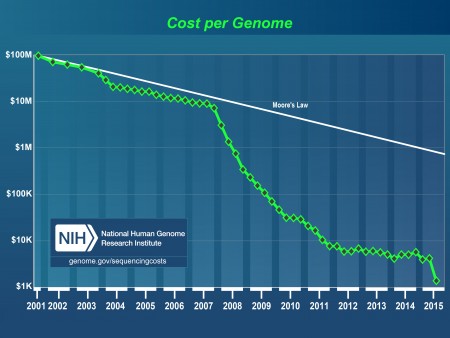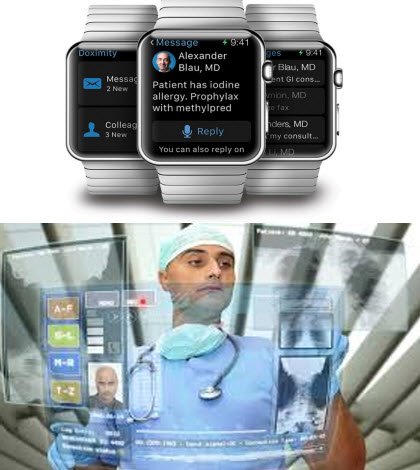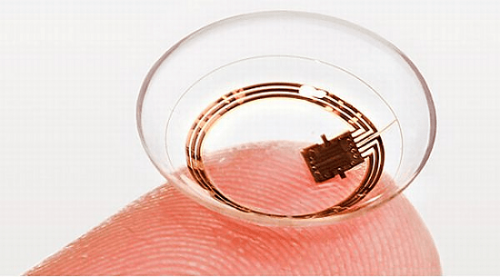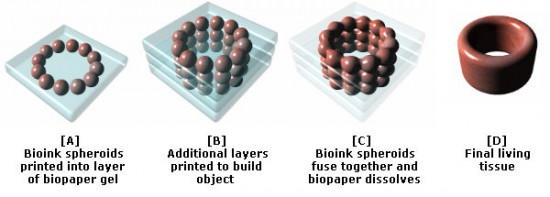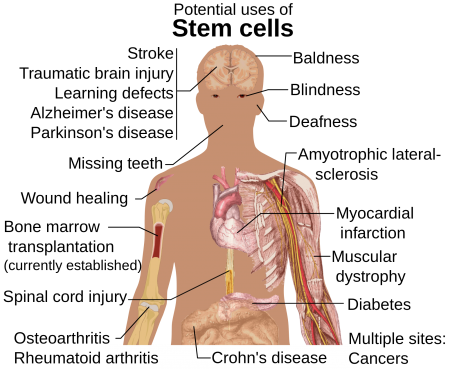November 9, 2015 – In Peter Diamandis’ latest mind-sharing email he adds more fuel to the positive disruptive changes happening in healthcare. He describes the reasons for this in stating the “bad news.” This along with a previous posting from October of last year provides an up-to-date and forward look at the future of healthcare based on technologies already in play. For the most part these are Peter’s words but I have added an appendix at the end with a list of some pretty interesting companies already marketing or about to release more disruptive healthcare innovations.
———-
The Bad News (U.S. Healthcare)
- Doctors spend $210 billion per year on procedures that aren’t based on patient need, but on fear of liability.
- Americans spend, on average, $8,915 per person on healthcare, more than any other country on the planet.
- Prescription drugs cost around 50% more in the U.S. than in other industrialized countries.
- At current rates, by 2025, nearly ¼ of the US GDP will be spent on healthcare.
- It takes on average 12 years and $359 million to take a new drug from the lab to a patient.
- Only 5 in 5,000 of these new drugs make it to human testing. From there, only 1 of those 5 is actually approved for human use.
The Good News
We are in the middle of a medical revolution driven by exponential technologies: artificial intelligence, sensors, robotics, 3D printing, big data, genomics and stem cells. Today’s $3 trillion healthcare industry is in a deceptive phase as its marches towards dematerialization, demonetization and democratization.
What does that mean?
Imagine a time within the next 10 years when:
- AI-enabled autonomous health scans provide the best diagnostics equally for the poorest and wealthiest on Earth.
- Large-scale genomic sequencing and machine learning allows us to understand the root causes of cancer, heart disease and neurodegenerative diseases and what to do about them.
- Robotic surgery carries out a perfect operations every time for pennies on the dollar.
- Each of us can regrow our heart, liver, lung or kidneys when we need them instead of waiting for donors to die.
These breakthroughs are materializing because of the convergence of the following key accelerating technologies. Let’s examine each of these disruptive changes to healthcare in greater depth.
AI and Healthcare
Artificial intelligence will enable better diagnoses and personalized medical recommendations and treatment.
- Companies like Enlitic are using AI and deep learning to improve the accuracy of health screening and diagnosis to personalize care.
- Johnson & Johnson and Apple working with IBM’s Watson Health are reading and understanding health information gathered from wearable devices (see Apple Watch system below) as well information gleaned from the latest scientific papers detailing clinical trial outcomes. One Watson system contains over 40 million documents ingesting an average of 27,000 new ones each day to provide new insights. After only a year, Watson’s diagnosis rate for lung cancer is 90% accurate compared to 50% percent for human doctors.
Sensors and Healthcare
Wearables, connected devices and quantified-self apps will allow us to collect enormous amounts of useful health information.
- Wearables like the Quanttus wristband and Vital Connect can transmit blood pressure readings, electrocardiogram data, posture and stress levels, and other vital signs to anywhere on the planet through Cloud connectivity.
- Google is also developing a range of internal and external sensors such as the Smart Contact Lens (seen in image below) that monitors a wearer’s vital signs including blood sugar levels and other blood chemistry.
- The $10M Qualcomm Tricorder XPRIZE is bringing Star Trek’s Tricorder to life – not for doctors or nurses, but for you, the consumer.
Robotics and Healthcare
The precision, accuracy, and mobility of medical robotics will allow us to serve more humans around the world, faster and cheaper.
- Over 3 million surgeries worldwide have been performed by Intuitive Systems’ da Vinci robotic system using 3D HD vision inside the body, with precise movements that eliminate potential human failures such as hand tremors and fatigue. daVinci is just one of a new generation of surgical robots that autonomously and perfectly conduct routine surgeries without human error and at a fraction of the cost, demonetizing and democratizing surgery.
- Telepresence technologies like Suitable Technology’s BEAM, InTouch Health and the Mayo Clinic’s Telestroke, allow the world’s best physicians to beam themselves to locations around the world to consult and do virtual rounds at hospitals.
3D Printing and Healthcare
On-demand manufacturing will make medical devices cheaper and more readily accessible to millions, and it will make scarce resources like organs-for-transplant abundantly available.
- 3D Systems is printing precise dental and anatomical models, custom surgical guides, implantable devices, exoskeletons, hearing aids, prosthetics and braces for scoliosis and other applications.
- Students at Washington University in St. Louis, Missouri, recently 3D printed a robotic arm for about $250 to $275 U.S. Traditional robotic limbs can cost between $50,000 and $70,000, and in the case of children need to be replaced as they grow.
- Dr. Anthony Atala’s team and companies like Organovo are bio-printing with cells to produce tissues, blood vessels and even small organs.
Genomics, Big Data and Healthcare
The cost of sequencing the human genome has plummeted from $100,000,000 per genome in 2001 to $1,000 per genome today… outpacing Moore’s Law geometrically (see graph below).
- Human Longevity Inc. is on a mission to accumulate the largest genomics data set ever. It will sequence over 1 million full human genomes, microbiomes, MRI body image scans, metabolomes, and more. With that large a data set, the company will be able to unlock the secrets of our biology, finding insights into and cures for cancer, heart disease and neurodegenerative diseases, and ultimately extending human lifespan.
Stem Cells and Healthcare
We are in the earliest stage of stem cell therapy development. Future therapies will be transformative and, frankly, mind-boggling.
- Stem cell therapy promises tissue regeneration and renewal – and thus a “cure” for everything from blindness to spinal cord injuries, Type 1 diabetes, Parkinson’s disease, Alzheimer’s disease, heart disease, stroke, burns, cancer, osteoarthritis and more. In 2009 researchers at Cedars-Sinai Heart Institute conducted a clinical trial infusing cardiac stem cells into a damaged heart to regenerate healthy tissue. Current research is developing guided therapies capable of directing stem cells to specific areas within the body where they can provide regenerative therapy.
———-
To learn more about the exponential changes in healthcare that Peter describes check out the Healthcare Innovation Lab where cutting-edge, early-stage technologies demonstrate revolutionary innovations in the field of medicine. Among companies presenting this week in San Diego, California, are:
Ambiotex – wearable medical sensors embedded in clothing.
Beyond Verbal – software that understands emotions through voice analysis.
CaptureProof – capturing medical media that can be searched to assist in finding information to improve health outcomes.
Eko – developers of Core, a technology that helps doctors identify heart defects through the analysis of heart sounds heard through a stethoscope.
LifeQ – a computational technology that creates bio-mathematical models to create insights into personal health.
Medtep – tracking personal daily habits through software providing a dashboard for wellness monitoring by professionals.
Orig3n – genetic screening and personal diagnostics for treatment of rare genetically inherited diseases.
Qidza – developers of BabyNoggin, technology that helps parents track and identify potential child development problems.
Sense.ly – an avatar-based augmented reality technology to assist physicians in managing the health of chronically ill patients.
Sugar Streak – motivational application for diabetics to manage blood sugar levels and extend their Sugar Streak.
uBiome – making leading-edge scientific research accessible to the public to learn more and become participants in assisting the advancement of science.
Universal Diagnostics – developing metabolomics to discover biomarkers leading to early diagnostic testing for a range of cancers. Their first product, a blood-based test for detection of colorectal cancer and polyps.
UNYQ – digital manufacturing of personalized prosthetics and orthotics.
X2AI – artificial intelligence that interacts with patients with mental health issues and determines when they need to connect with their human therapists to avoid crises.

